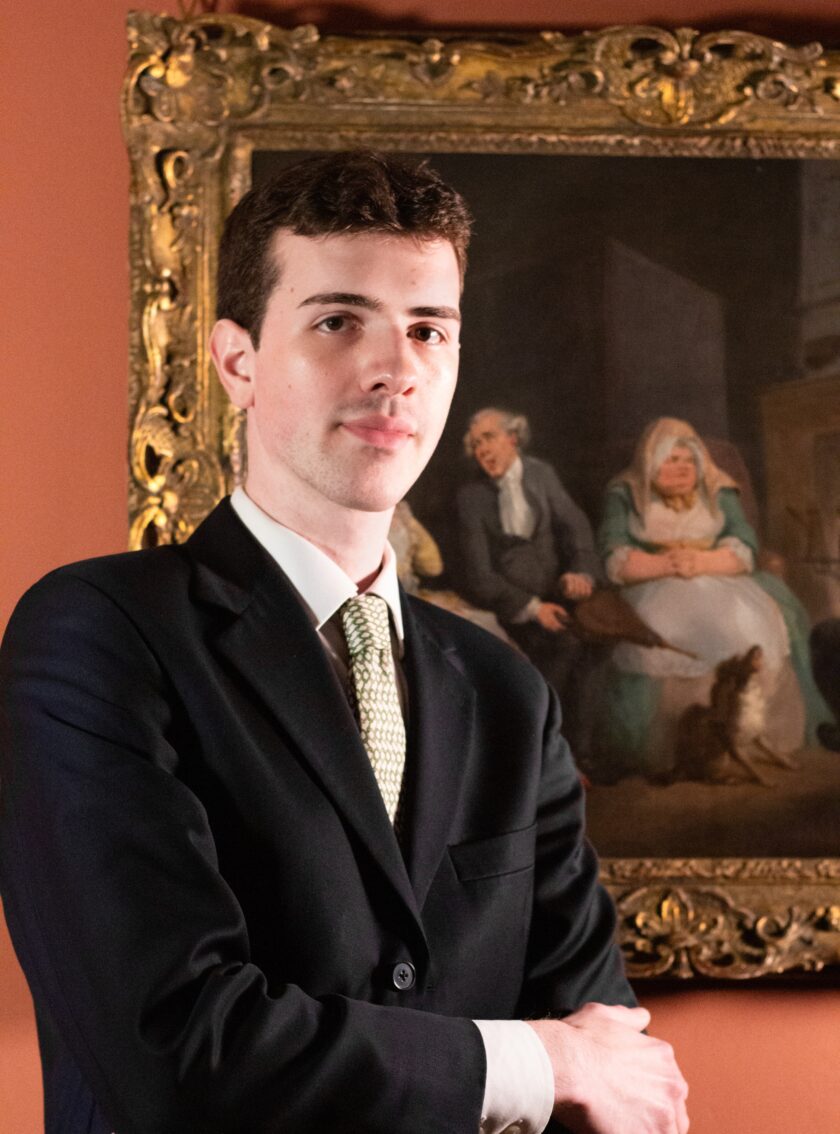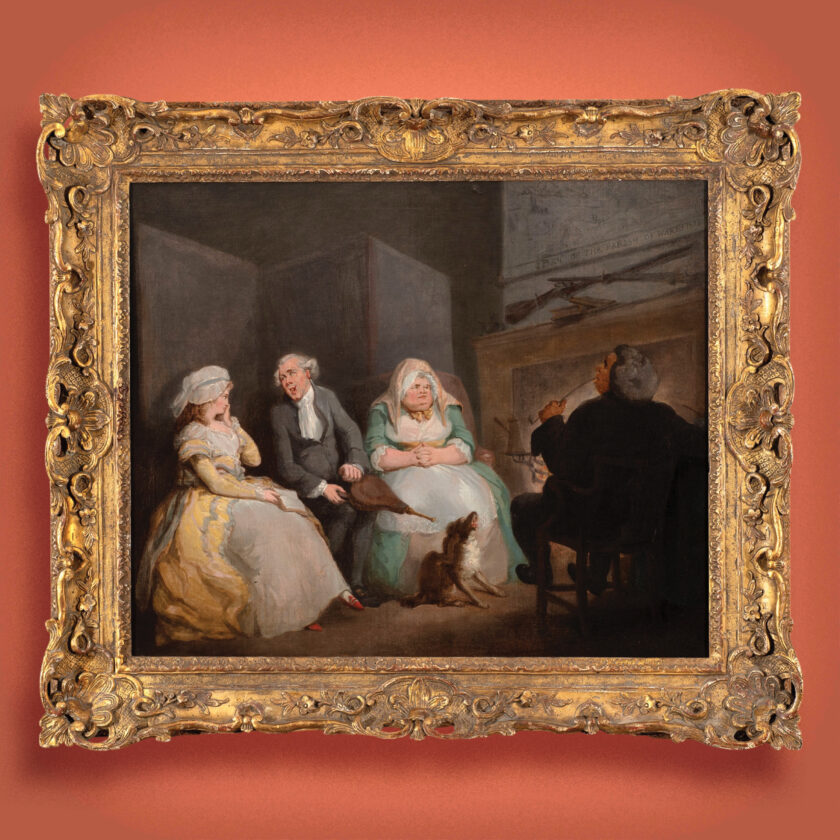Xander Haveron-Jones (English, 2018) talks us through his recent journey of establishing a fine art dealership at just 24 years old, and his recent Old Master sale to Yale University.

Xander Haveron-Jones
Some of my fondest artistic love affairs belong to Somerville, whose modern masters ‒ Duncan Grant, Roger Fry, Ivon Hitchens ‒ look on over toast and cereal, and quietly occupy college’s busy thoroughfares (Jacob Epstein’s bronze of Louise was a favourite of mine). While Somerville’s collection might superficially have little on Christ Church Picture Gallery, or the 100+ Duncan Grants packed into a St Peter’s conference room, its value is entirely the opposite. Somerville’s artworks aren’t isolated exhibits, but the wonderful material of daily college life. And just as with people, an artwork can only ever be fully known once it’s been lived with under the many lights and colours of everyday life.
Oxford nurtured my academic understanding, and my brilliant tutors patiently endured as each week my (supposedly literary) tutorial essays encroached ever further into the visual arts. But Oxford is also where, being perpetually work-shy, I began turning student-sized profits by spotting good prints in charity shop windows and taking them to Sanders on the High Street. I’d graduated into oils by the time I began my Master’s at the Courtauld, and after specialising in paintings at a West London auction house, had assembled a respectable foundation stock. Comprising works ranging from the 16th century to the contemporary, I established Haveron Fine Art in January 2025.
My first successes derived from a firm belief that a dealer should positively transform the artworks which they offer ‒ through research, (re-)attribution, restoration (or most drastically all three). To reunite a work with its centuries-old history of ownership or creation is to fundamentally transform our understanding of it ‒ which for the diligent dealer can promise considerable financial reward. This was the case with my recent discovery of an exceptionally rare Old Master painting, which I have just sold to Yale University.
Some of my fondest artistic love affairs belong to Somerville, whose masters look on over toast and cereal
Catalogued as belonging to the artistic circle of William Hogarth, A Country Vicar’s Fireside plays off a handsome young couple foolishly caught up in flirtation against their age-swollen fireside counterparts, offering a humorous comment on the follies of youth. Yet my identification of a 1788 print based on the composition identified the work as that of the influential satirist Henry Wigstead (1745-1800), who rarely painted works in oil. Furthermore, I established that it may well be his only painting known to survive. Even Sotheby’s New York (who sold the work in 2012) had not firmly ascribed it to Wigstead, presumably because they had failed to discover its inclusion in the 1786 Exhibition of the Royal Academy.
Yale University’s Lewis Walpole Library (an outstanding holding of 18th-century British satire) recognised the rarity of the work, and their selectors’ committee unanimously voted to acquire it. It now forms a part of Yale’s world-class collection. But I will forever remember the painting as it hung among others on my bedroom walls: like Somerville’s great artworks, the painting transformed through being lived with, its glowing hearth and amorous chatter lighting wintry Berkshire nights. The painting became a part of my personal history, and I a part of its ‒ a history which will now be lastingly preserved for scores to appreciate.
Encouraged by these early triumphs (at only 24 years old), I am working hard to expand my business through a growing client base and further important discoveries. But I will always remember Somerville for setting off my excitement for artworks as lived objects. One day I hope to leave my own contribution for the enjoyment and inspiration of future Somervillians.

Henry Wigstead, ‘A Country Vicar’s Fireside’